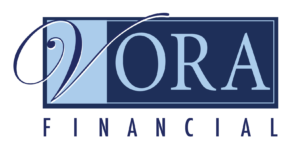If you have taken an RMD in 2020 before learning of the RMD waiver for the year under the CARES Act, there is still a chance for you to return – or roll over – your unwanted RMD to an IRA or company plan.
It doesn’t matter when in 2020 you took your RMD. The 60-day rollover period will not apply under the IRS Blanket Relief. Moreover, the once-per-year rule is waived for this relief, so if you took monthly RMDs earlier in the year, you can return them all.
This new guidance was released by the IRS in Notice 2020-51 last June 23, 2020. This, however, applies only to RMDs. Withdrawals of non-RMD funds are still bound by the one-rollover-per-year rule and the standard 60-day rollover rule.
In addition, the IRS has expanded the definition of “qualified individuals” who are eligible for Coronavirus-Related Distributions and Loans from Retirement Plans under the CARES Act.
This was embodied in Notice 2020-50 which was issued in response to many comments received seeking clarification of the definition of a qualified individual.
The IRS has expanded the definition to include one who experiences adverse financial consequences due to COVID-19 as a result of:
- Having a reduction in pay (or self-employment income) or having a job offer rescinded or start date for a job delayed;
- Having a spouse or a member of a household (as defined below) being quarantined, being furloughed or laid off, having work hours reduced, being unable to work due to lack of childcare, having a reduction in pay (or self-employment income), or having a job offer rescinded or start date for a job delayed; or
- Closing or reducing hours of a business owned or operated by the individual’s spouse or a member of the individual’s household.
If one is not deemed “qualified,” a workaround could be to take a hardship distribution offered by many workplace retirement plans. The IRS, however, has set strict standards to take a hardship withdrawal and an “immediate and heavy financial need” for the withdrawal must be satisfied by falling under any of the seven “safe harbor” expenses below.
These are:
- Medical expenses for the employee or the employee’s spouse, dependent or primary beneficiary under the plan.
- Costs related to the purchase of a principal residence for the employee (excluding mortgage payments).
- Tuition, fees and room and board expenses for up to the next 12 months of post-secondary education for the employee or the employee’s spouse, child, dependent or primary beneficiary under the plan.
- Payments necessary to prevent eviction or foreclosure on a mortgage from the employee’s principal residence.
- Burial or funeral expenses for the employee’s parent, spouse, child, dependent or primary beneficiary under the plan.
- Expenses for the repair of damages to the employee’s principal residence.
- Expenses and losses (including the loss of income) incurred
by the employee on account of a disaster declared by FEMA, provided the employee’s principal residence or principal place of employment at the time of the disaster was located in a designated disaster area.
You may be better off requesting a CRD instead of a hardship withdrawal though as CRDs are not limited to the amount of financial need, require less certification and are likely to be approved quicker.
We can help you navigate through these new laws and provisions. Give us a call and we’ll tailor a plan for your personal circumstances.

Ready to take
The Next Step?
For more information about any of our products and services, schedule a meeting today or register to attend an online or in-person seminar.
